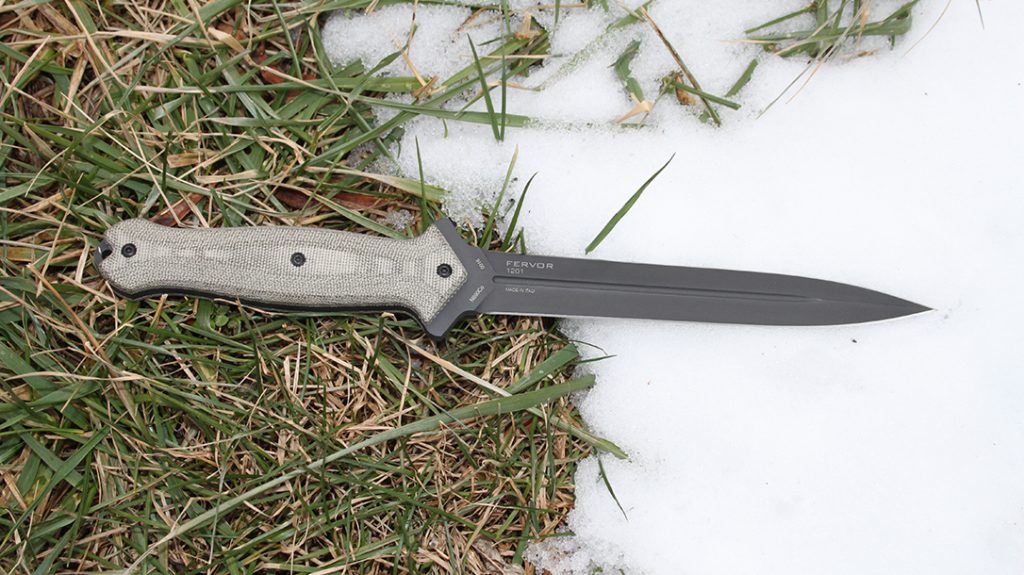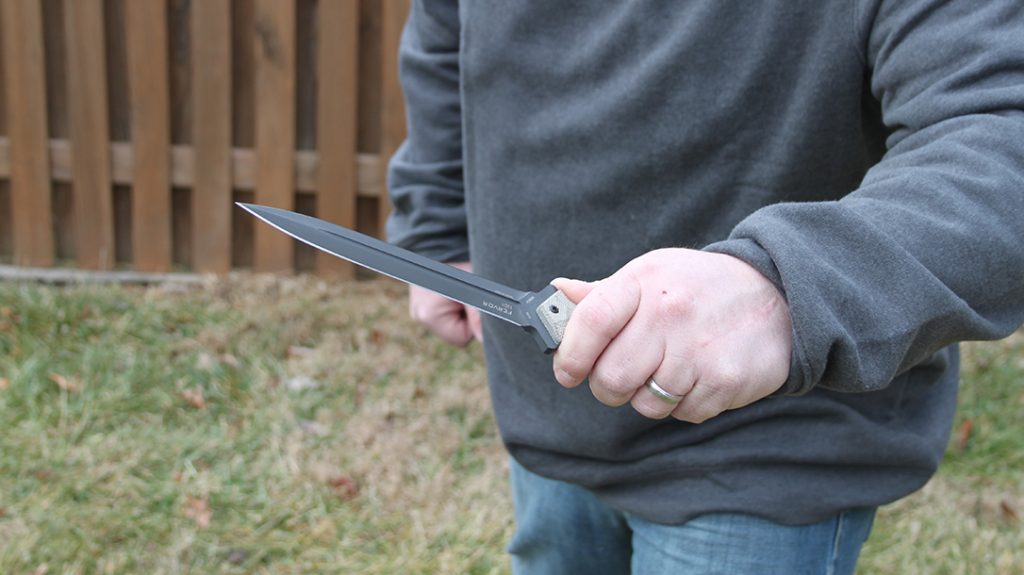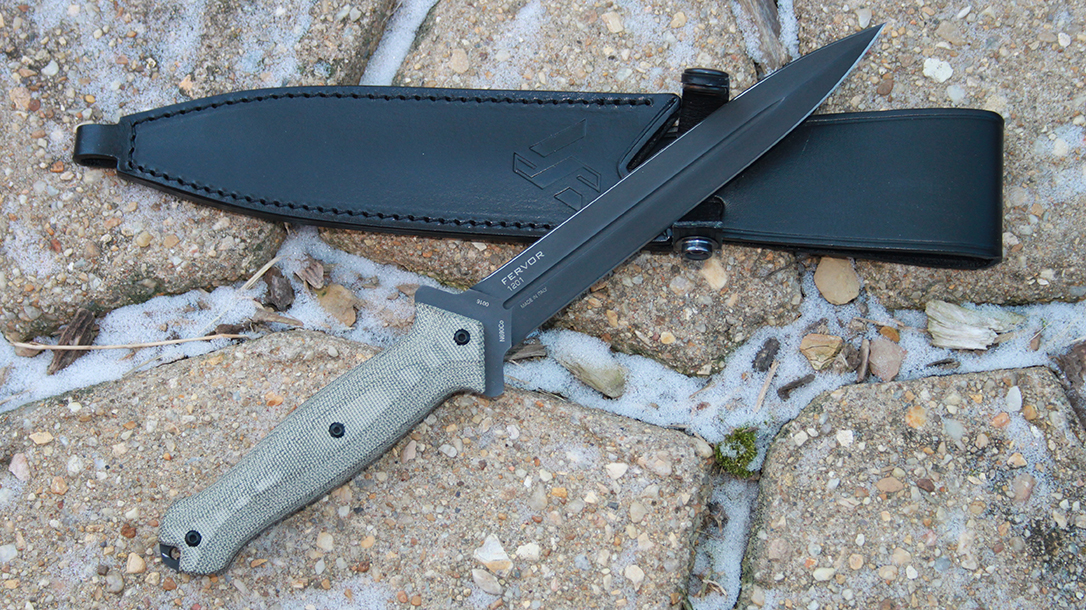People often use the terms “stiletto” and “dagger” interchangeably in today’s knife world. This was not always case. Stiletto blades are traceable to 15th Century Italy. Stilettos evolved from daggers as a specialty weapon. Often stilettos were not sharpened, relying on needle like blade profile to fulfill their penetrating duties. The sleek stiletto point was ideal for slipping through chain mail, gaps in plate armor or helmet eye slits to finish off an opponent. Away from the battlefield, stilettos were often employed as offensive weapons ambushing unsuspecting opponents.
Understanding Stiletto Daggers in the Knife World
To this day stiletto daggers are both revered and villainized — a credit to their effectiveness in the knife world. Throughout human history, cultural elites have used the dagger as status symbol showing courage and daring; this carries through today. Even a cursory glance at special operation unit patches supports this. At the same time, stilettos are associated with treachery and assassinations.
Legally speaking stiletto/daggers are often lumped into the same category as other “taboo” blades such a switchblades, OTF automatics, butterfly knives, etc. Knife laws are more convoluted than firearms — that says something. If it’s double edged and/or longer than 3 inches, then it’s probably frowned upon. I would say that daggers have a lethal persona based on deeds performed. After all, everyone knows Caesar was dispatched by Senators wielding stiletto daggers. Et tu, Brute! Stiletto daggers were the sword ages equivalent to concealed carry.
Advertisement — Continue Reading Below
Back Into the Fold
Evolution has steered the stiletto more back into the dagger fold. Over the last 100 odd years, the stiletto dagger’s design has solidified into its current recognizable pattern: Tapered point, a central spine or fuller, and dual cutting edges honed to razor sharpness. Most daggers feature a crossguard to keep the hand from riding forwards onto the blade.
Sharpened full length twin edges enable broad slashes using either a forehand or backhand arm movement. This deadly versatility distinguishes the modern stiletto dagger from a more specialized stiletto thrusting knife, which often does not have sharpened edges and relies solely on the point for its work. However, make no mistake, the dagger’s success relies on how well it can be thrust and puncture an adversary.
There is purity in the dagger’s simplicity. While not discounting benefits of formal training, the stiletto dagger’s design is for proactive, aggressive fighting. No artistic flourishes or clever knife drills needed with a stiletto dagger, just aggression and knowledge of human anatomy.
Advertisement — Continue Reading Below
The Steel Will Fervor
The Steel Will Fervor’s styling harkens back to medieval times. The Fervor is made in Italy — the birthplace of the stiletto dagger. Meanwhile, the Fervor’s aesthetics are centered on a sleek 6.69-inch long, .22-inch thick double edge blade created from Austrian N690Co steel. This European steel is similar to U.S. 440C stainless in terms of corrosion/wear resistance, strength and hardness.

The Fervor also features a 58-60 RC hardness. The key with knife steel is the consistency and uniformity in its heat treatment. N690Co is a good choice for hard-use applications. It also provides increased point strength — something important with a dagger — while allowing for superior edge geometry.
Advertisement — Continue Reading Below
A cannelure runs down the center of the blade. Created by a tool called a fuller, often referred to as a blood groove, the cannelure is a forging technique that serves to strengthen the Fervor’s blade. A good analogy is to think of the fuller groove serving as an I-beam reinforcement allowing for more strength achieved using less material; this translates into penetration power.
More on the Fervor
The Fervor measures 11.8 inches with its full tang equipped with Micarta grips to interface between user and blade. This an important attention to detail for those who know how slippery blood and sweat can be. The Fervor’s crossguard further helps to ensure that the user’s hand does not slip past the hilt.
Another distinctive feature of the Fervor is that Steel Will designed its handle to give tactile feedback in terms of which way its blade is orientated. The wider flat area of the handle simulates a horizontal blade while the slimmer upward facing handle indicates a vertical blade position. In utter darkness or having to react instantaneously, this intuitive feedback is critical. A conventional palm grip with blade horizontal enables the user to slash right or left as well as thrust the blade between an opponent’s ribs.
Advertisement — Continue Reading Below
Steel Will uses ASPIS process black coating finish to further isolate the Fervor’s blade from wear as well as reduce glare. The company achieves the coating by immersing the steel in oxidant solutions previously heated to its specific temperature. The surface obtained is essentially made of extremely hard oxides that are 0.1 micron thick.

One last distinguishing feature of the Fervor is its Italian leather sheath. Leather has served as a traditional sheath material for good reason. Steel Will fashions the Fervor’s sheath tight enough to function as a retention, while allowing for a silent blade draw. A snap around the handle serves as additional security. Many times, manufacturers pair a promising blade with a substandard sheath compromising its potential; this is not the case with the Steel Will Fervor.
Advertisement — Continue Reading Below
The Stiletto Dagger’s Single Knife Purpose
The thought process behind the stiletto dagger is to end an engagement with one well place thrust. The pointed profile of the stiletto dagger-type blade has always been subject to criticism as being too fragile. However, in my opinion, this is based on a misunderstanding of the role it is designed for.
The Steel Will Fervor is not a general purpose knife. The dagger is and always has been a close range fighting weapon; not a general purpose tool used for day to day chores, processing food or setting up camp. Steel Will designed the Fervor’s blade to penetrate flesh, plain and simple.
My testing showed that the force required to penetrate tissue is directly related to the sharpness and fineness of the tip and overall blade geometry. The sharp tip leading to the straight double edges results in the Fervor penetrating deeply and quickly. It also allows for easy removal of the knife instead of binding up in the target, thus facilitating rapid multiple strikes if needed. The Steel Will Fervor represent centuries of refinement for the dedicated stiletto dagger. For even more info, please visit SteelWillKnives.com.
Advertisement — Continue Reading Below
Steel Will Fervor 1201 Specs
- Overall Length: 11.81 inches
- Blade Length: 6.69 inches
- Overall Weight: 8.16 ounces
- Blade Type: N690Co
- MSRP: $319




















